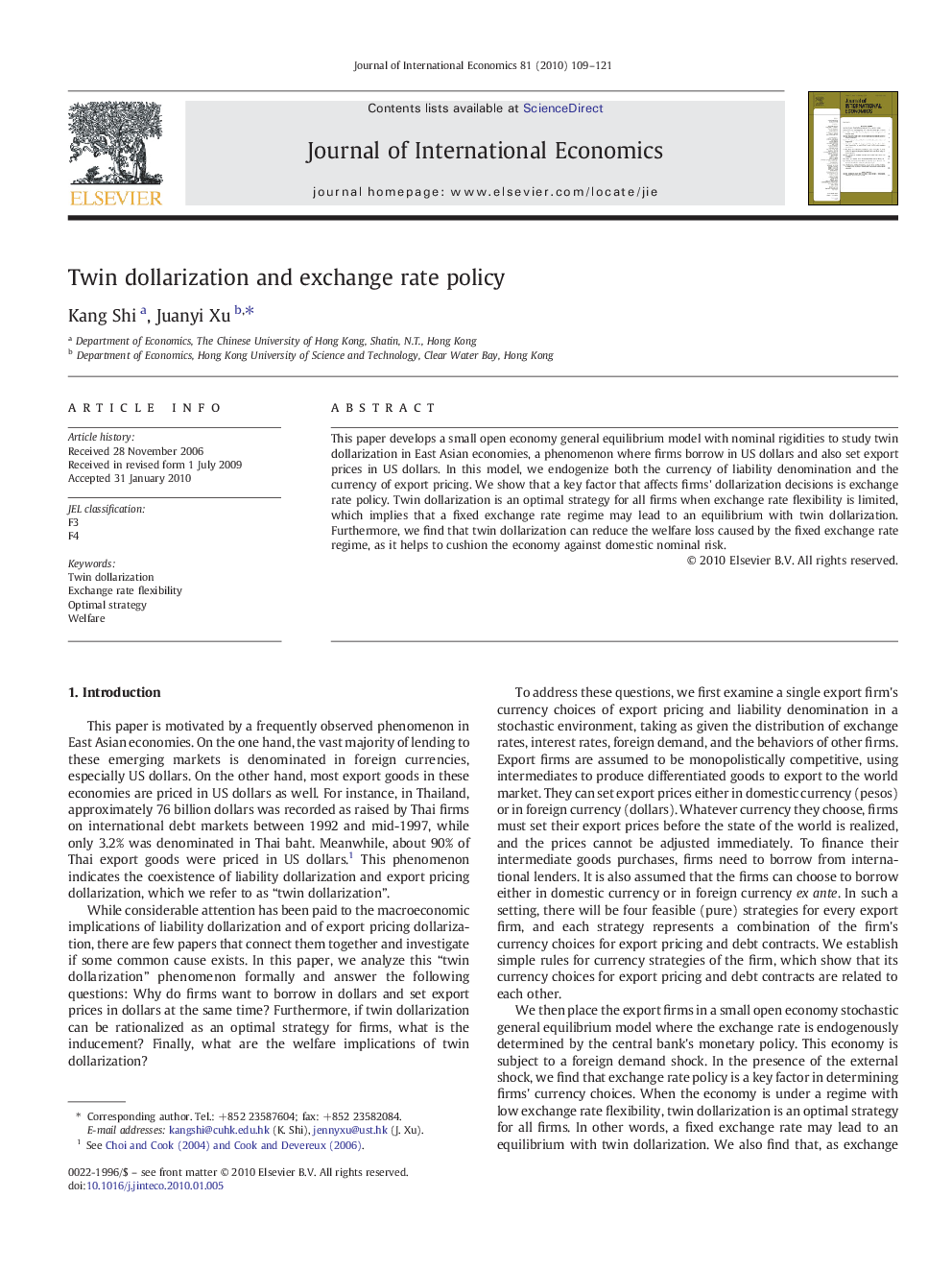| Article ID | Journal | Published Year | Pages | File Type |
|---|---|---|---|---|
| 962728 | Journal of International Economics | 2010 | 13 Pages |
Abstract
This paper develops a small open economy general equilibrium model with nominal rigidities to study twin dollarization in East Asian economies, a phenomenon where firms borrow in US dollars and also set export prices in US dollars. In this model, we endogenize both the currency of liability denomination and the currency of export pricing. We show that a key factor that affects firms' dollarization decisions is exchange rate policy. Twin dollarization is an optimal strategy for all firms when exchange rate flexibility is limited, which implies that a fixed exchange rate regime may lead to an equilibrium with twin dollarization. Furthermore, we find that twin dollarization can reduce the welfare loss caused by the fixed exchange rate regime, as it helps to cushion the economy against domestic nominal risk.
Related Topics
Social Sciences and Humanities
Economics, Econometrics and Finance
Economics and Econometrics
Authors
Kang Shi, Juanyi Xu,
